Succulents can be found in almost every green corner of an apartment or office, they are often grown to create unusual interiors. The main feature of such plants is their ease of care and undemanding to external factors. Stapelia brought from South Africa is popular with flower growers. This succulent has unusual flowers of bright colors in the shape of a star.
Despite the exotic appearance, the stapelia has a persistent unpleasant odor during flowering, resembling rot, and this is true for all types of this cactus relative. Before buying a slipway, it is important to familiarize yourself with the basic rules of home care for a particular type of plant, which can be pre-selected by photo and description.
Content
Indoor flower characteristic
Stapelia is a perennial succulent from the Gusset family. Its habitat in the natural environment is the slopes of the mountains, the shores of the reservoirs of South Africa. The plant has flowers of unusual shape and beauty, which resemble a starfish, for which the people received a similar name for the flower. The main characteristics of the slipway include:
- small size - 10-60 cm in height;
- underdeveloped root system;
- branched shoots;
- smooth skin of the ground;
- bright green color with a splash of yellow and pink;
- fleshy shoots of a curved shape;
- white waxy coating on the surface of greenery;
- embossed protrusions on twigs resembling thorns;
- dusting occurs with the help of flies;
- the presence of large buds in the lower part of the plant;
- long peduncle;
- flowers of a flat or bell-shaped, five-petalled shape;
- flower diameter 5-30 cm;
- glandular villi on the surface of the petals;
- the presence of seed boxes;
- the color scheme of petals: maroon, lemon, bright orange and red.
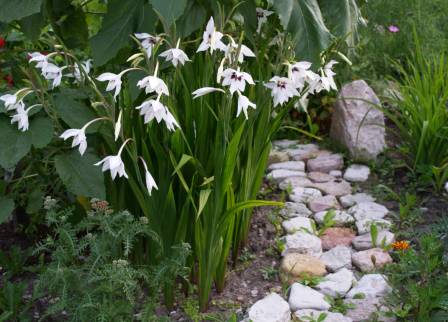 You may be interested in:
You may be interested in:Despite the really unpleasant aroma of this plant, it is popular with flower growers due to its unusual colors and ease of care.
Names and descriptions of types of slipways
In nature, there are about 100 types of stocks, some of them are cultivated for full growth at home.
Large flowered
Succulent with tetrahedral green shoots that branch well. It forms a flower with a diameter of 15-25 cm, for which it got its name. The flower is located on a flexible and long peduncle, has the shape of a starfish. The hue of the petals is purple, characterized by the presence of long silvery villi. During flowering, the fetid odor of the plant disappears. The largest representative of this species is the stapelia of Grandiflora.
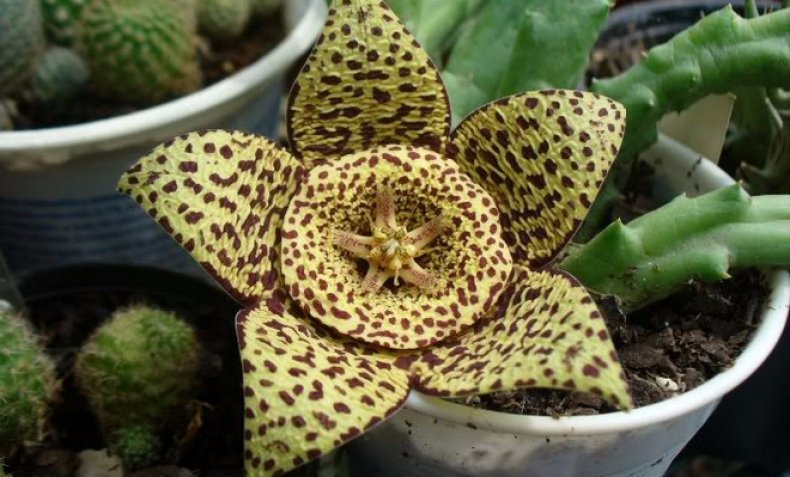
Star-shaped
A small plant, reaching a height of 20 cm, has tetrahedral shoots of a saturated green hue, in which there are pinkish stains. There are small cloves around the perimeter of the shoots.Star-shaped flowers are located at the base of the succulent on short pedicels, about 8 cm in diameter. The triangular petals are curled back and have a tuberous surface with villi at the edges. The color of the petals is brown or red. Typically grouping several flowers at the base.
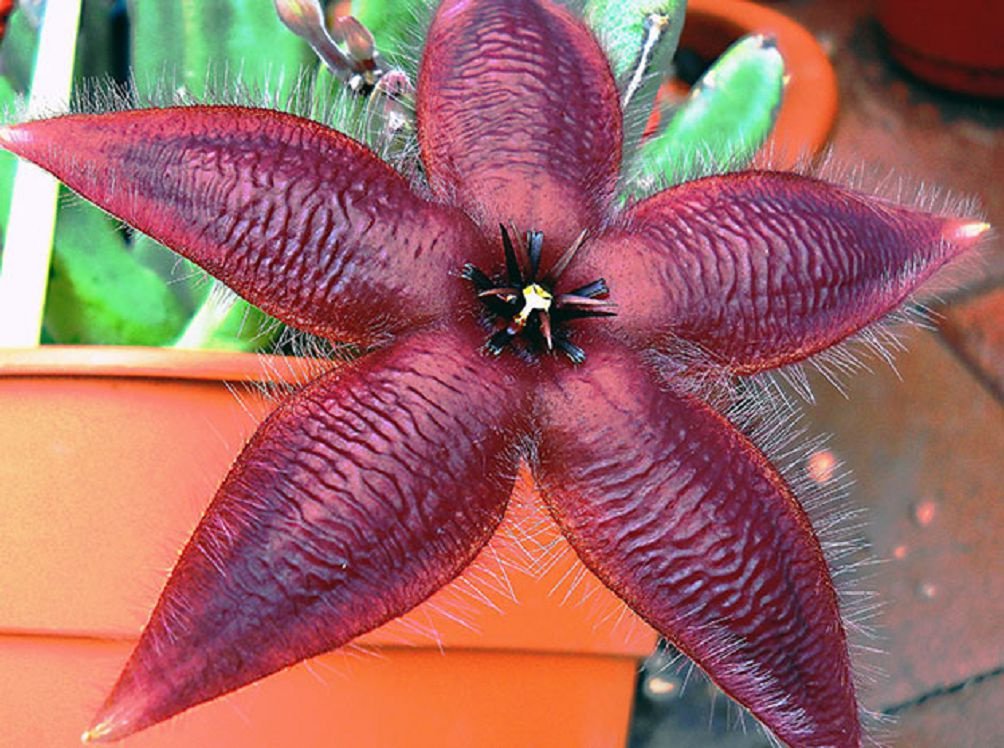
Giant
The species received its name for flowers that reach 30-35 cm in diameter and are the largest among the varieties of slipway. The five-petal flower has villi along the contour, cream color with burgundy subtle touches. The tips of the petals are elongated, can take a spiral shape. Succulents can develop into a bush under suitable conditions. During flowering, it smells of rotting meat.

Changeable
The plant grows up to 15 cm in height, is a hybrid form of stapelia. Flowers are small up to 8 cm, located on an elongated peduncle. Along the edges of the petals there is a small amount of villi. The shape of the petals is ovoid, and their color can be the most diverse. This species is characterized by the presence of spots, dots and stripes on the petals.
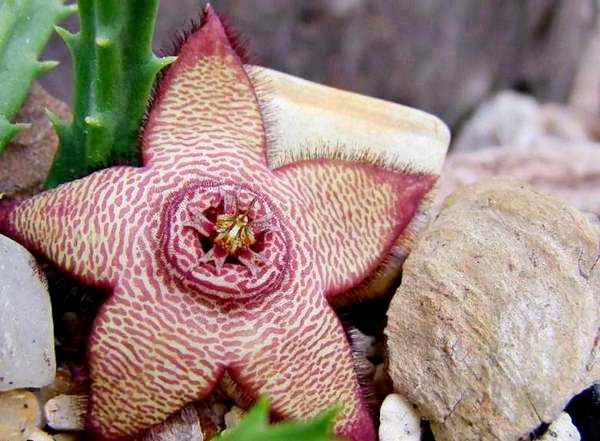
Golden purple
A low plant with dark green shoots. Flowers bloom at the top of the shoots and gather in inflorescences of several buds. They have dissected and elongated lettuce or yellow petals, which are rather narrow, and their surface is cut with tubercles. The center of the flower is covered with a purple or white pile, creating a contrast with the petals. This variety has a pleasant aroma, although it is weakly expressed, but it is still a distinctive feature of the Golden-purple stapelia.
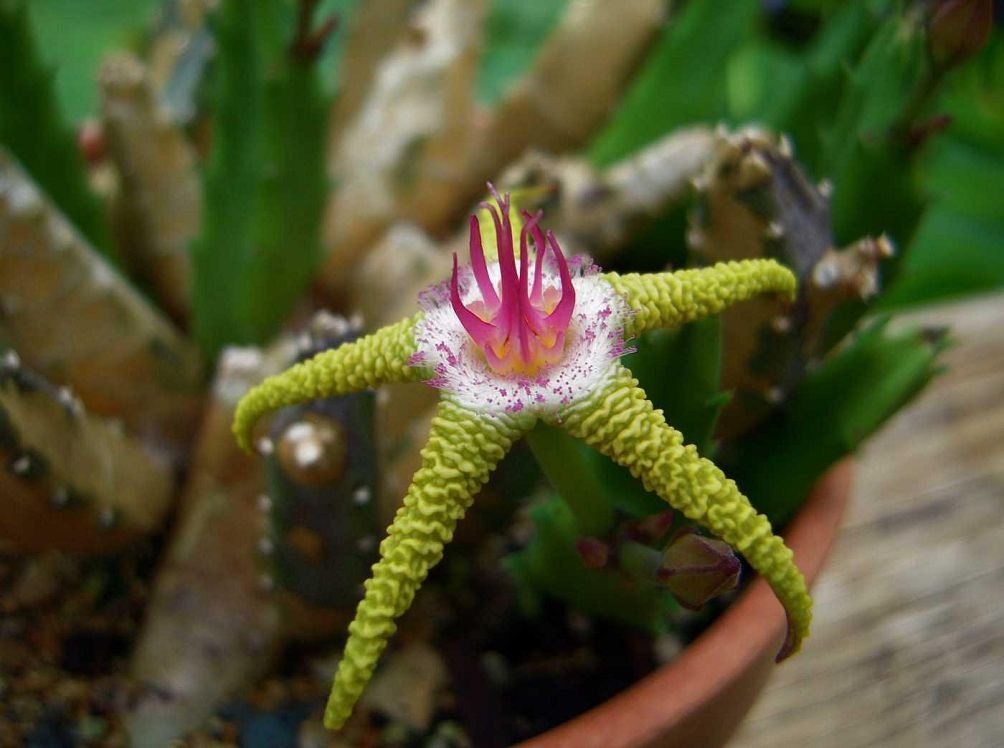
Ferruginous
This succulent reaches 15 cm in height and has typical light green stems with a ribbed shape, and several buds bloom at the base at once during flowering. Characteristic is the location of the buds on the falling pedicels. In diameter, the flowers reach 5 cm and have a yellow or lemon tint. The petals are covered with long light villi, on the ends of which there is a small thickening.
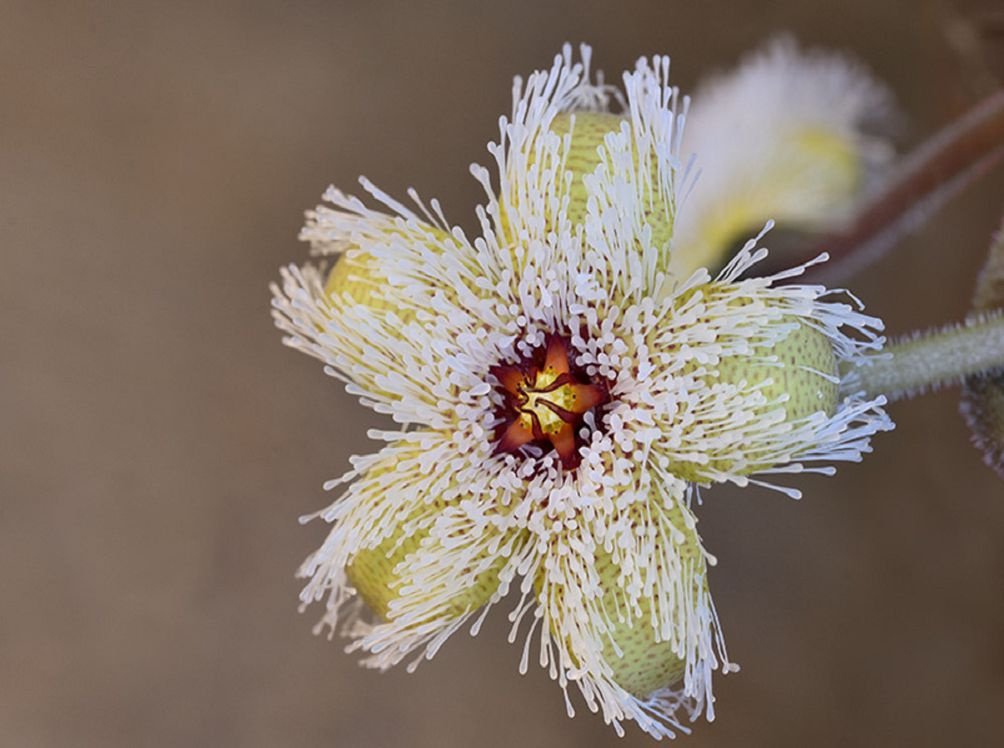
Rules for the care of a slipway at home
Succulents are popular with flower growers because of their unusual appearance and easy care when growing them at home.
Soil and planting pot
Stapelia requires a stable low flowerpot so that the growing ground part does not fall out of the pot.
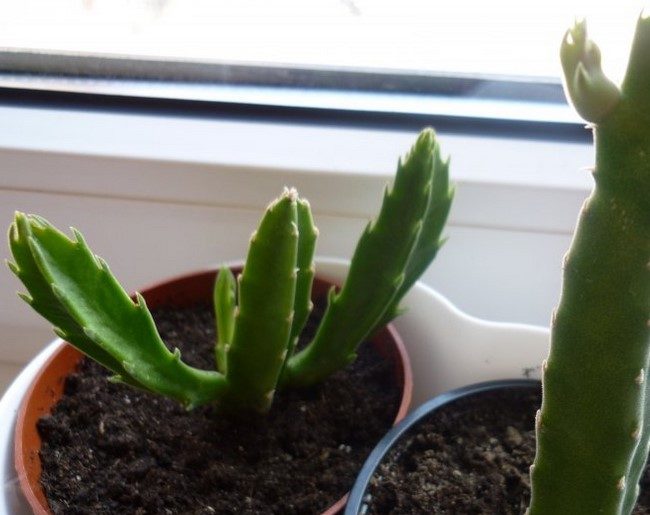
A special substrate for succulents and cacti is perfect for this plant. If you wish, you can also prepare the soil at home, using turf soil and sand in a ratio of 2: 1, you should also add some charcoal. For a slipway, a drainage layer is mandatory, which can be up to a third of the total soil in the pot.
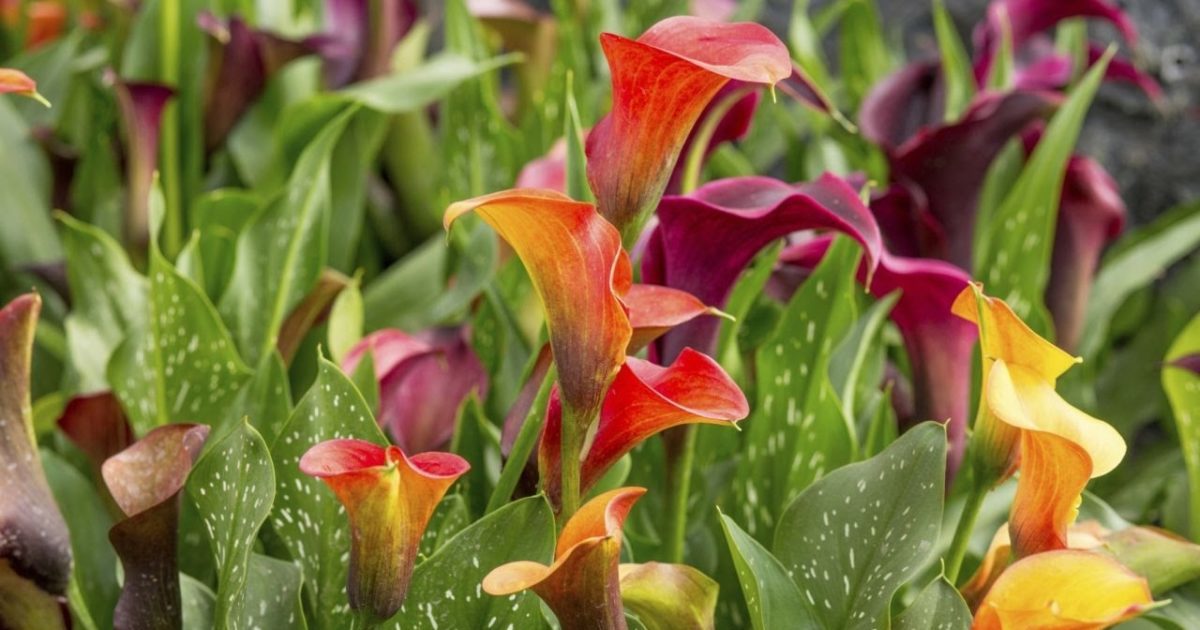 You may be interested in:
You may be interested in:Location and lighting
For the flower, large windows on the south and west sides are well suited, since the sun's rays for it are necessary in large quantities for full development. With a lack of light, the stem begins to lose its meatiness and flowering does not occur. Despite the fact that succulent is very fond of light, direct sunlight is not advisable during the hot summer days, as the plant may get burned.
Watering and humidity
Succulent does not need frequent watering, in the summer it is enough to add water once a week, in the autumn period, you should focus on the drying of an earthen coma and avoid stagnation of moisture in the soil. In winter, watering is reduced to 1 time per month.Use sludge at room temperature.
Stapelia is not picky about air humidity, but excess moisture can still lead to deterioration of the stems.
Temperature and ventilation
Despite the fact that the natural habitat of the succulent is hot Africa, the temperature regime should correspond to the time of year and the period of development of the plant. In the summer, a temperature of + 22-27 degrees is permissible, and with the approach of winter it should be gradually reduced, since the flower should rest before spring. For winter, the temperature of the plant should be within +15 degrees.
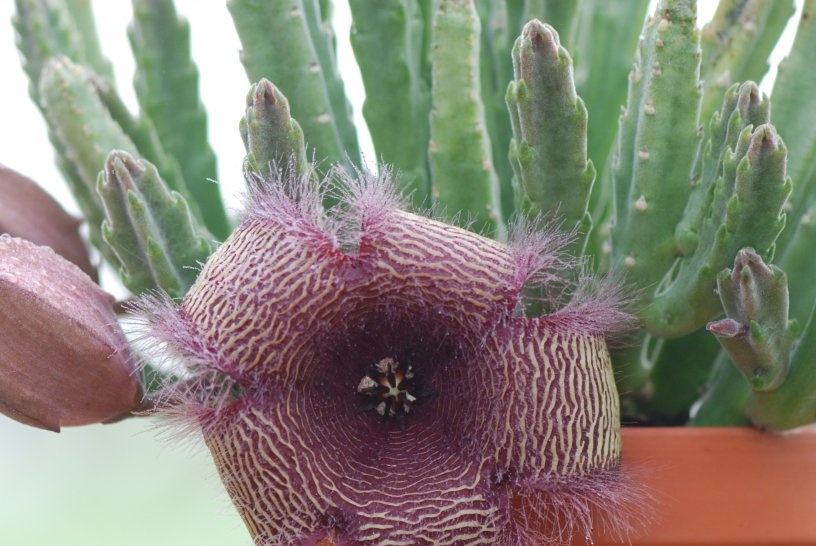
Fertilizers and fertilizing
In the period of active growth - spring-summer - the slipway needs organic and mineral fertilizers. Special fertilizers for succulents and cacti are recommended to be applied no more than twice a month, and in the autumn-winter period the flower does not need to be fed. It is important to pay attention to the presence of potassium in the fertilizer, this component is especially important for the plant.
Bloom
Since the specific aroma of this succulent is pronounced during its flowering period, it is recommended to take it to a balcony or loggia so that there is no unpleasant smell in the house.
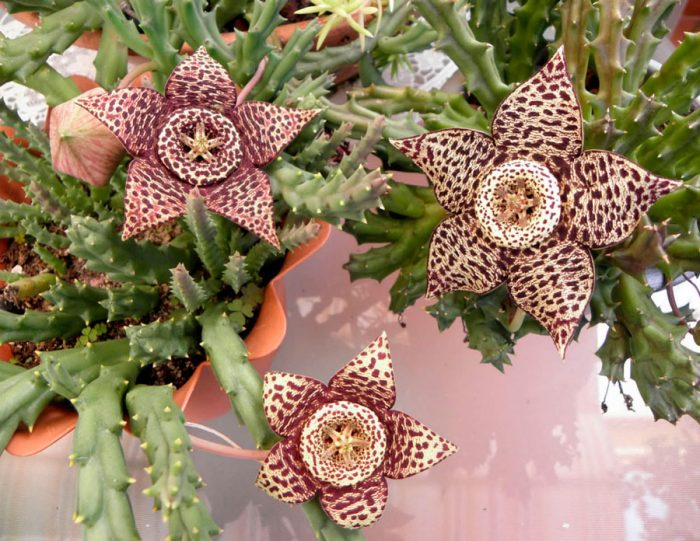
Transfer
Annual transplantation is necessary only for young plants, since their root system is still being formed. It is recommended to carry out the procedure in the spring. For adult slipways, transplantation is allowed once every several years in order to update the composition of the substrate or increase the size of the pot. Extreme care should be taken during the procedure so as not to disturb the roots. For a succulent that has been grown for a long time, you can simply change the topsoil once every three years.
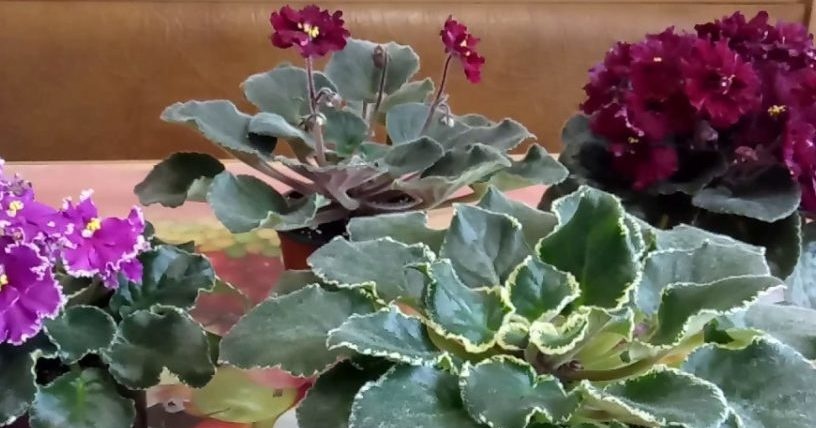 You may be interested in:
You may be interested in:Breeding methods
It should be replaced that the planting of stapelia is not the easiest task and often an attempt to propagate a room flower fails. Experienced flower growers are advised to try out several methods suitable for propagating a flower - cuttings or seeds.
Cuttings
This method of seating is the most popular, it consists of typical steps used in the propagation of different types of succulents:
- Cuttings are cut with a sharp knife or secateurs, the tool necessarily requires disinfection before use.
- You should choose cuttings on old shoots, closer to the base of the flower.
- Slices need to be sprinkled with charcoal so that the damaged succulent heals faster.
- Put the prepared shoot in a warm and well-ventilated place for several hours, you can leave it for a day.
- Cuttings are planted in a shallow container filled with a mixture of peat and sand.
- The pot must be placed on a well-lit window sill and sprayed every day. In this case, the first watering should be two days after planting.
- Wait for the rooting of the shoots and transplant them into small flowerpots, using a substrate for succulents.
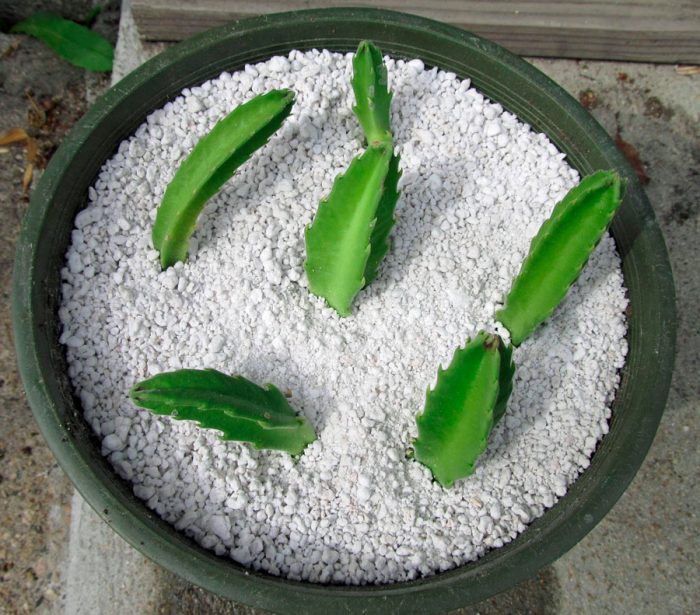
When spraying, you can use special fertilizers that help the plant to take root better.
Dividing the bush
This method of reproduction is not popular because of the high risk of damage to an adult plant, but you can still try to divide the root system of the slipway into smaller parts when transplanted in the spring. In this case, the soil should be disinfected in the oven or with the help of chemical solutions (Aktara, Fundazol).
Seeds
After flowering, the succulent forms a box in which seeds ripen. They can be used to propagate the plant. The seed ripening process lasts approximately a year. You can also purchase ready-made seeds in flower shops.
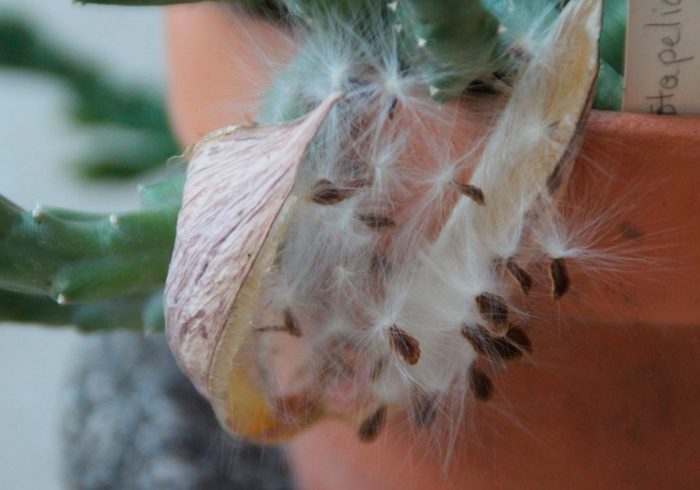
The breeding procedure consists of the following stages:
- Prepare a substrate consisting of peat and fine sand.
- Place the soil in a shallow container and spread the seeds on top.
- The container is covered with a film or glass and placed on a light windowsill. It is necessary to maintain a temperature of + 22-24 degrees in order for shoots to appear. On average, it takes about a month.
- It is imperative to constantly moisten the soil by spraying with warm water, which is well settled.
- Remove film / glass after emergence.
- Sprouted sprouts are planted in small flowerpots.
Succulents grown in this way will bloom in a few years. Due to the fact that stapelia is easily dusty and its species crosses, you can get an unexpected variety when using seeds.
Possible problems with growing stapelia
The stability of the slipway to various kinds of pests and diseases is directly affected by the presence of potassium in the substrate, if it is deficient, problems may arise when growing a flower:
- The stems become red-violet in case the plant received sunburn. It should be rearranged to another place.
- Shoots stretch and become noticeably thin. You need to increase the amount of light for succulents.
- Shrinkage of the stems occurs when the roots rot, caused by excessive watering and stagnation of water in the soil. The roots need to be treated by cutting off the damaged areas. If the rot has already hit the entire root system, then you should try to plant the cuttings to get new plants.
- Yellowed and falling stems indicate that the stapelia receives too much fertilizer. It is necessary to reduce the dose and regularity of feeding.
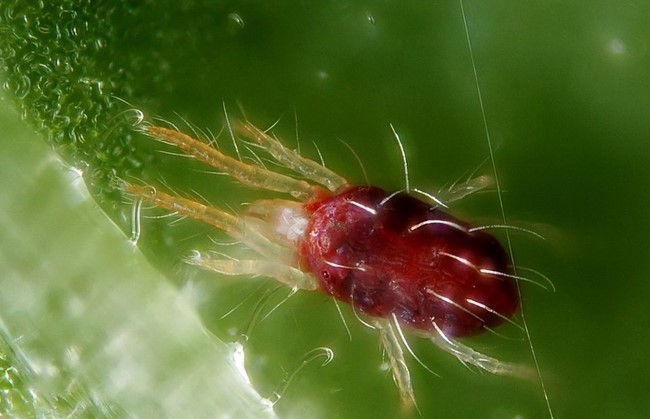
At the first suspicion of their presence, it is necessary to isolate the flower and treat it with special chemicals in accordance with the instructions.
Common questions
Unique flowers of variegated colors and large sizes attract the attention of gardeners. The succulent is undemanding in care and, while maintaining the minimum conditions, gives its owner in the summertime unusual buds with a smell peculiar only to this type.

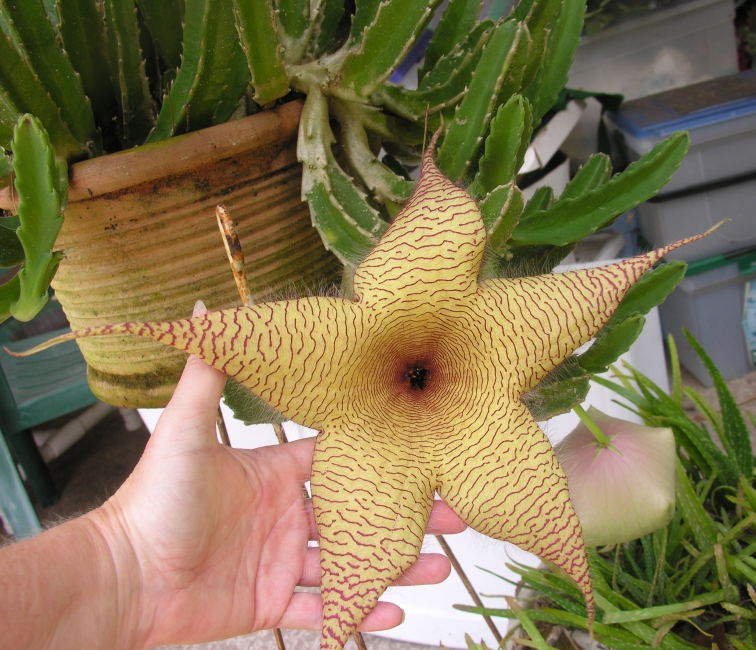
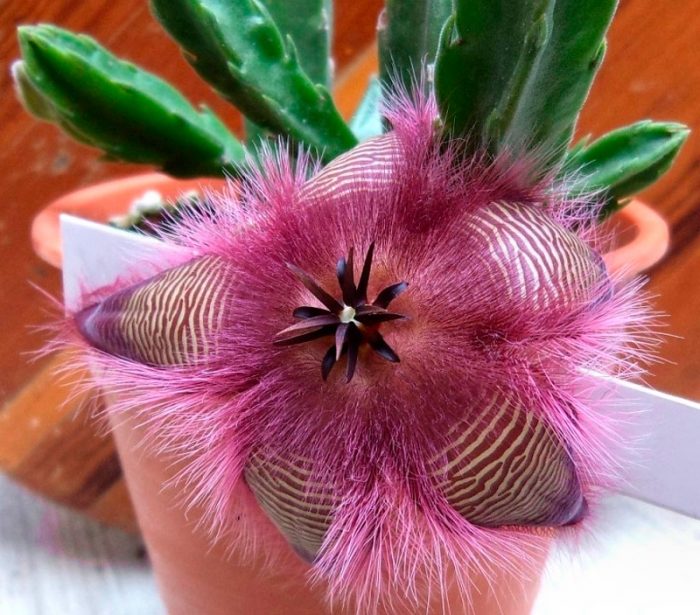
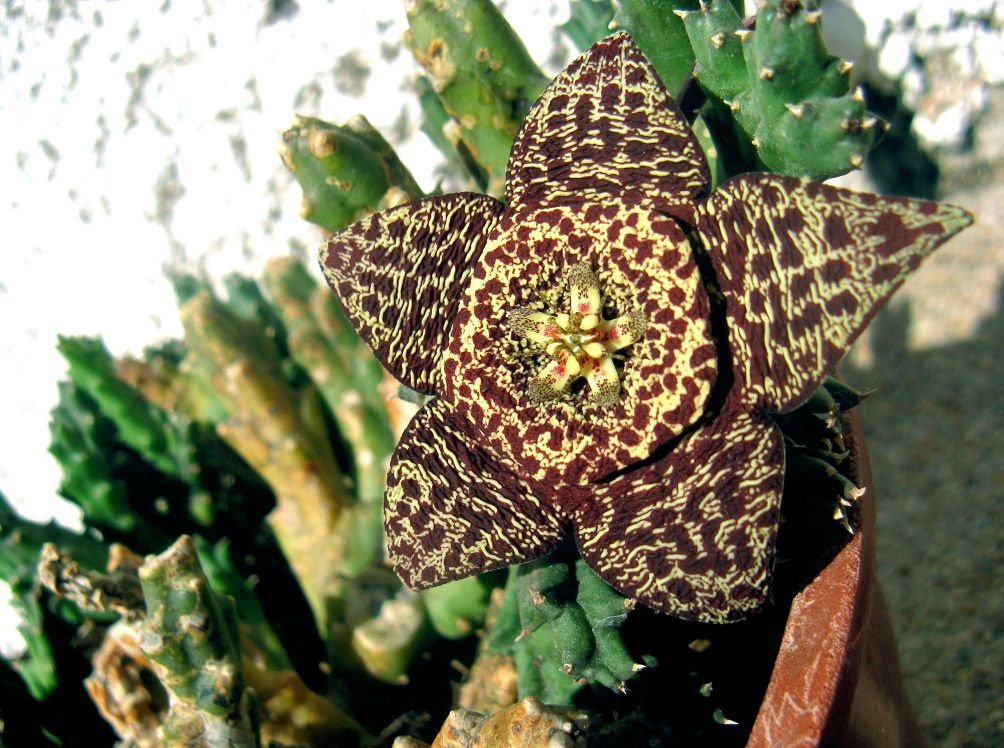
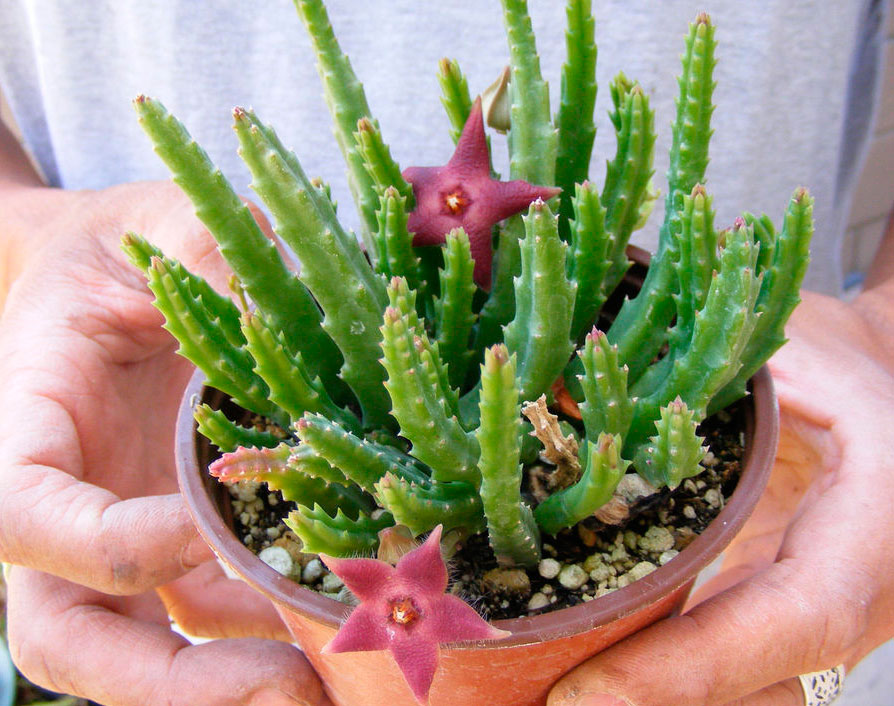



 Sow in the ground, without seedlings: 10 beautiful and unpretentious flowers
Sow in the ground, without seedlings: 10 beautiful and unpretentious flowers Platicodon planting and outdoor care
Platicodon planting and outdoor care Hosta - planting and care in the open ground in the Urals
Hosta - planting and care in the open ground in the Urals Oleander - care and growing at home
Oleander - care and growing at home